Washington’s Centennial Trail
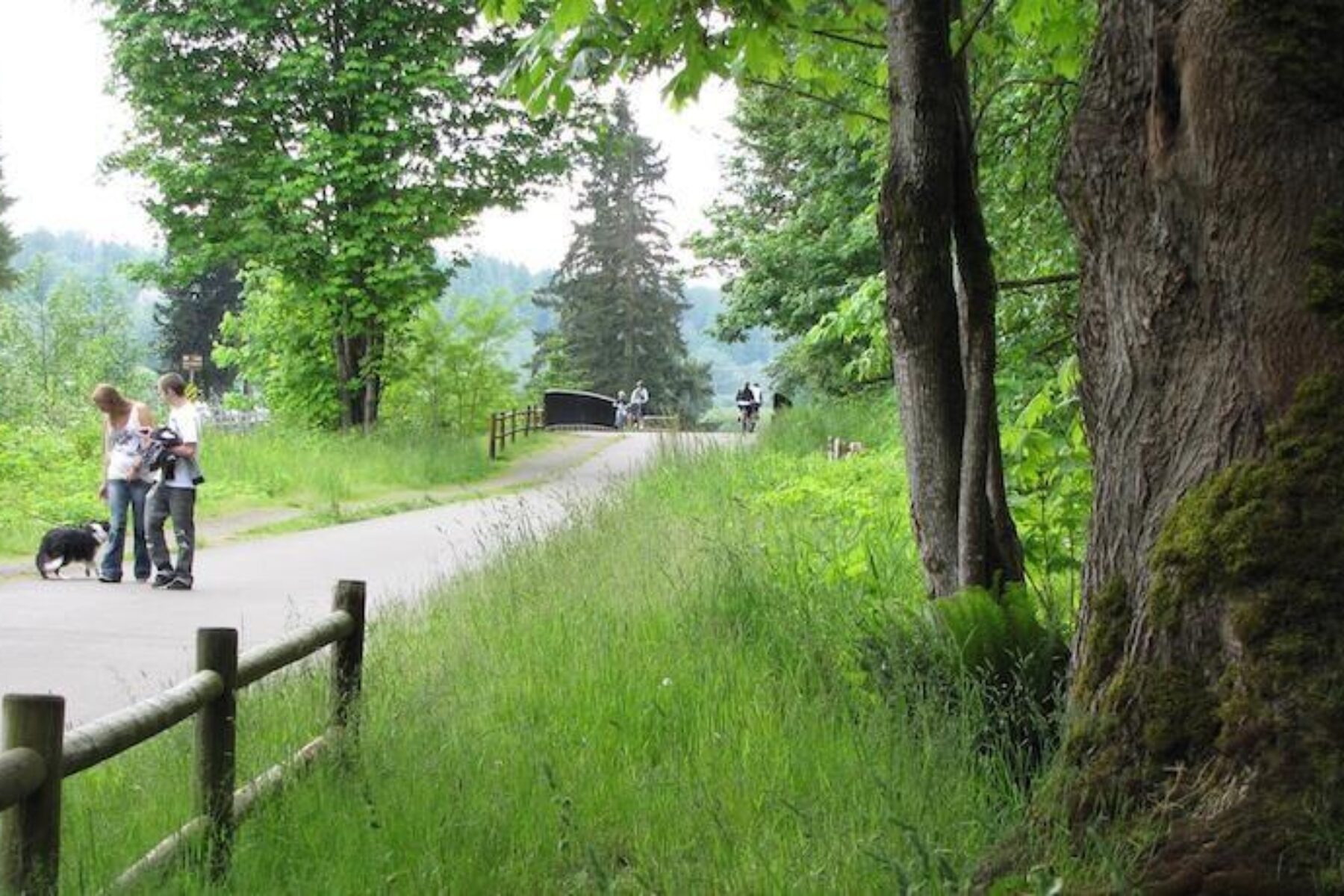
Trail of the Month: February 2023
“I’ve definitely heard from different people that have said specifically that they moved to this area because of the trail … It’s a large draw.”
—Sharon Swan, Snohomish County’s Principal Park Planner
Traversing a region in northwest Washington known for its rural farmlands, lush riverbeds, forests and lakesides, as well as its historic districts with that timeless small-town feel, Snohomish County’s Centennial Trail is a popular route among the nearly 90 rail-trails in the state. Its diverse geographic features make it a haven for wildlife, including the occasional black bear. Just west of the trail, the Snohomish River Estuary is home to hundreds of bird and mammal species.
Spanning 30 miles, the paved pathway starts in the city of Snohomish, then heads north through the towns of Lake Stevens, Marysville and Arlington, until it reaches the boundary between Snohomish and Skagit counties. The historic downtowns of these communities offer farmers markets, quaint shopping areas, a variety of restaurants and more than a dozen museums.
“The Centennial Trail is a safe, accessible and beautiful setting for people of all abilities to walk, bike, hike and horseback ride in Snohomish County—a trail I frequently cycle on and enjoy. I will continue to support local and federal efforts to improve trail accessibility for all people to use and enjoy, and protect sensitive and important natural and cultural resources along the trail corridor.”
—U.S. Rep. Rick Larsen
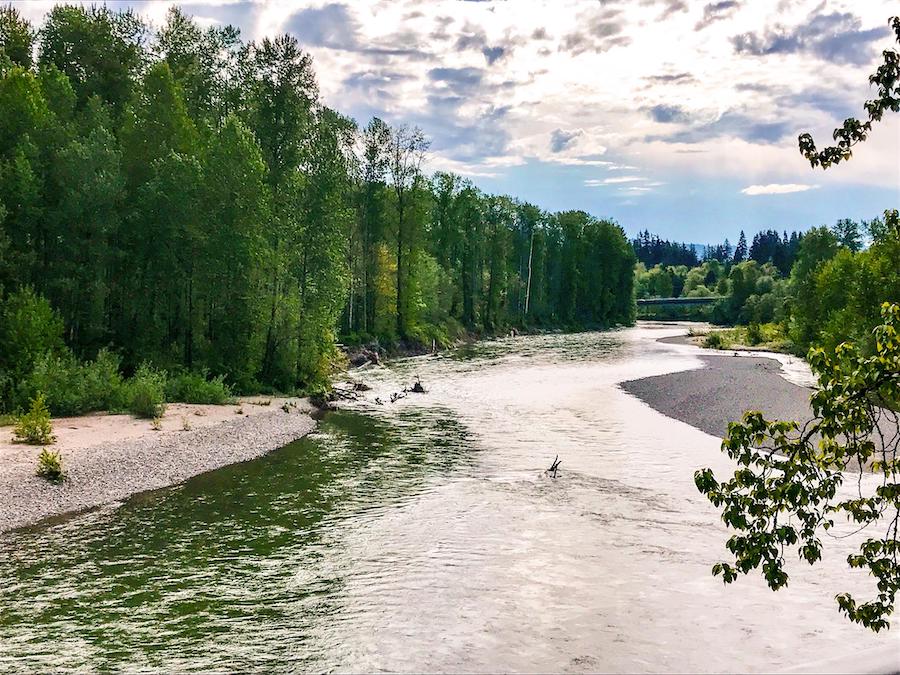
Traveling Through History
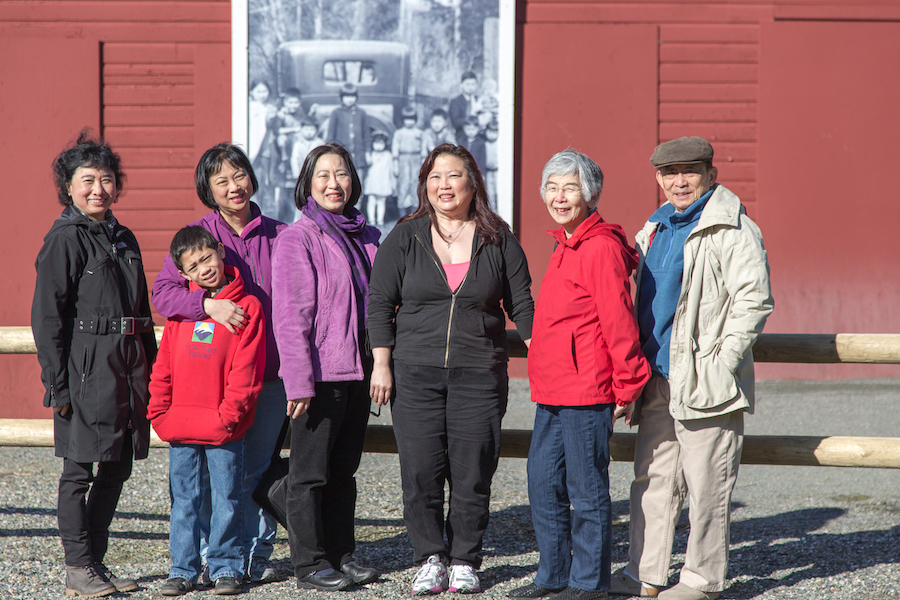
Among its benefits, the Centennial Trail shares stories from decades of regional history. Visitors can find interpretive signage all along the path as it winds its way through the ancestral lands of the region’s indigenous Tulalip tribes, including the Sauk-Suiattle, Stillaguamish, Snohomish, Skykomish and Snoqualmie. In the late 19th century, the Pacific Northwest was a timber mecca due to its abundance of old growth forests. During this time period, mills dotted the region, and the rail-trail offers reminders of this timber heritage.
“It’s like walking history,” said Gretchen Kaehler, the county’s archaeologist, who has hosted summer history walks along the trail.
At the trail’s northern trailhead stands the Nakashima Barn, originally built in 1908. It was bought by the Nakashimas, a Japanese farming family, in 1938. The family worked the land as a dairy farm until 1942 when, as the only Asian farmers in Snohomish, they were forced to sell it before being separated and sent to internment camps during World War II. The barn is now listed on Washington’s heritage barn register.
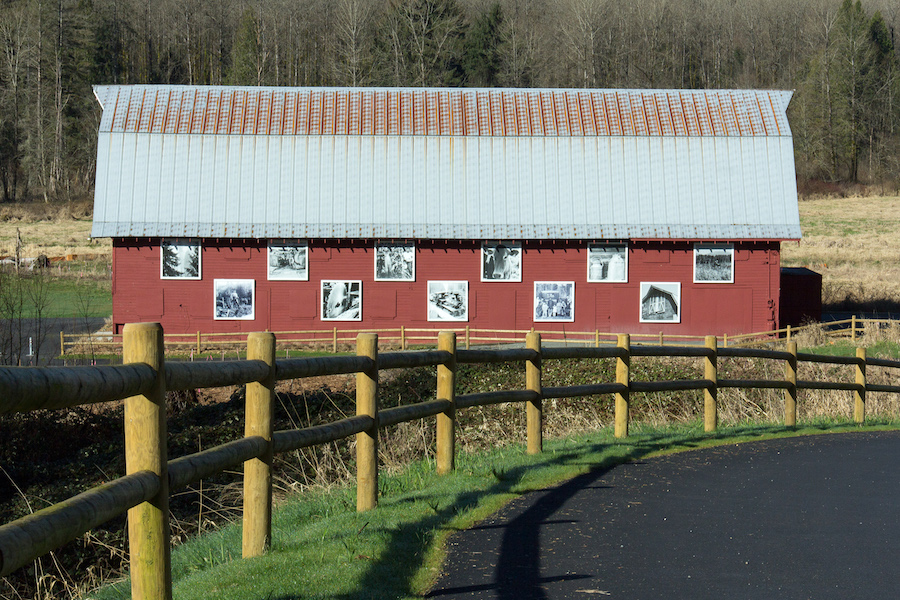
In 2012, the barn was adorned with a commemorative artwork of large photos on recycled vinyl displayed in a checkerboard pattern. This “barn quilt,” created by artist Ellen Southard of Site Story, was dedicated to the Nakashima family. The following year, 88 descendants of the family reunited at the barn for the first time since their ancestors were forced into internment camps.
“I hope it helps people think,” Southard said. “It’s important we understand land overtime and how land has had an impact in terms of social equity and environmental justice.”
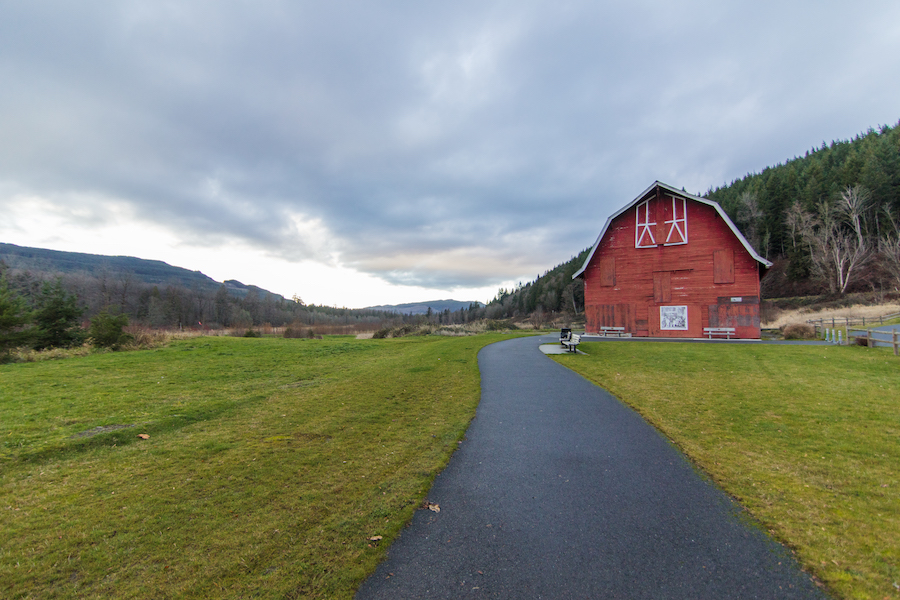
From Railroad to Rail-Trail
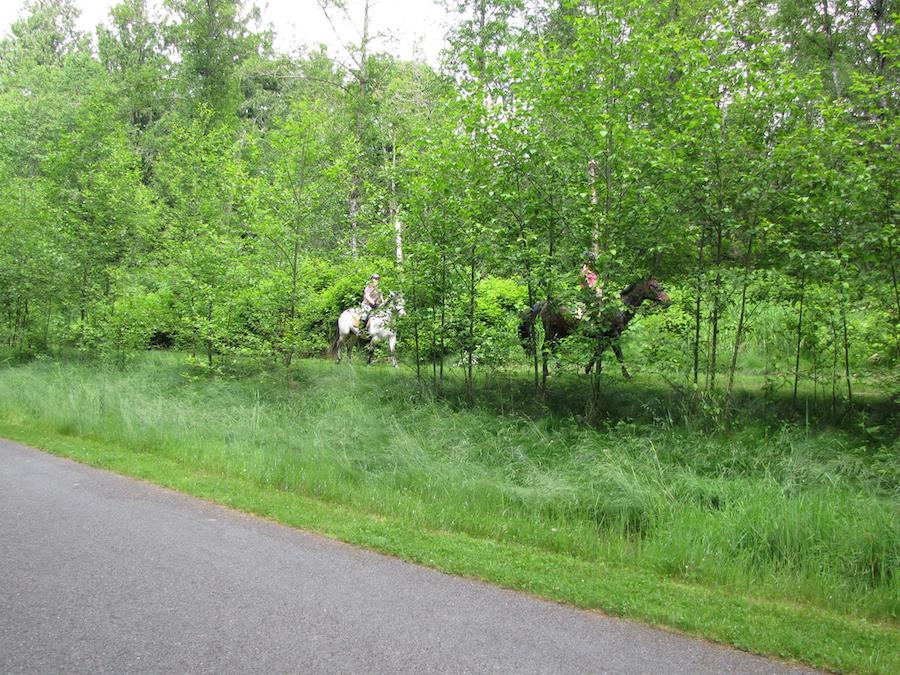
The trail’s trestle bridges and replica depot in Machias are also reminders of the trains that once passed through the area. Before it became the Centennial Trail, the corridor was used by the Seattle, Lake Shore and Eastern Railway (SLS&E), which was built in direct response to the Northern Pacific’s transcontinental railroad, headquartered in Tacoma.
Seattle’s business tycoons were determined to cash in on the railroad gravy train, and the right-of-way was originally pitched, owned and built by a group of elite Seattleites that included Thomas Burke and Daniel Gilman. The company was incorporated in 1885, and construction of the railroad began two years later. Thanks to Gilman’s eastern connections, the businessman secured $500,000 to fund the SLS&E’s construction. He sourced an additional $10,000 from a local investor. (In today’s dollars, this amounts to $15.6 million.)
Eventually, the company got into financial trouble and succumbed to its competition, with the Northern Pacific Railway company absorbing the right-of-way in 1892. It would eventually be absorbed again, this time by the Burlington Northern railroad company, before its evolution into a trail.
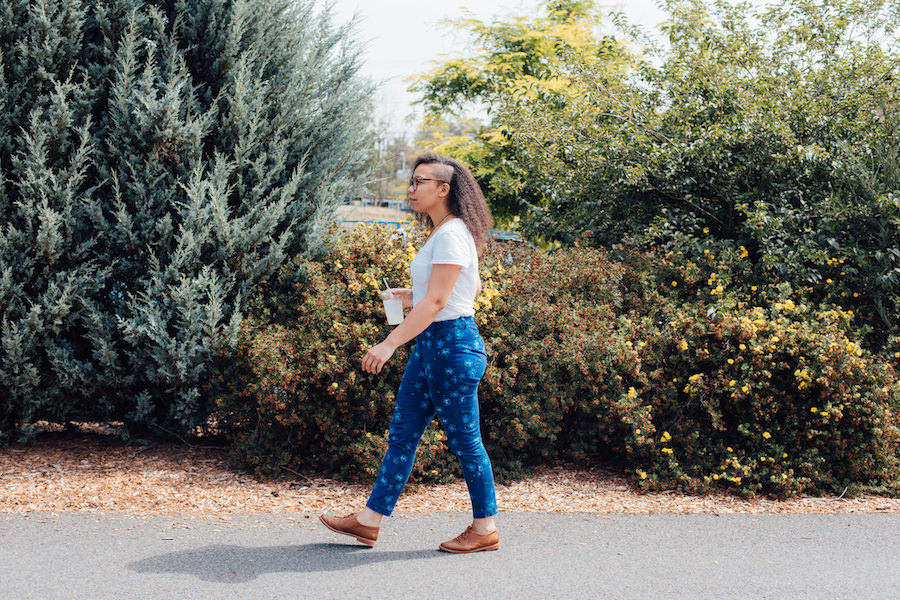
Considered one of the first major trails of Snohomish County’s trail system, the idea for the Centennial Trail first came about shortly after the northernmost section of the railway, between Lake Stevens and Arlington, was decommissioned in 1972. More than a decade later, residents at the time formed groups, such as the Snohomish-Arlington Trail Coalition and the Centennial Trail Coalition, to lobby for the development of a rail-trail. Four local equestrians—Betty Bauer, Robin Thome, Ellen Chaffee and Beth Hill—are credited with championing the trail and kicking the project into motion. (To this day, Bauer continues to advocate for Snohomish trails as part of the Trail Coalition of Snohomish County.)
In 1989, a century after the tracks were first laid and during the 100th anniversary year of Washington’s statehood, the “Centennial” Trail gained steam. That year, the state legislature pledged $1.1 million for the trail if the county could raise the same amount by 1991. They did—in February 1991, the Snohomish County Council matched the $1.1 million needed to secure the state funding. At the time, the then-county parks senior planner, Pat Kenyon, said the project would be “a critical linkage to trails to both the north and south, and would connect eventually to the Burke-Gilman Trail in King County.”
RELATED: Washington’s Burke-Gilman Trail
Future Connections
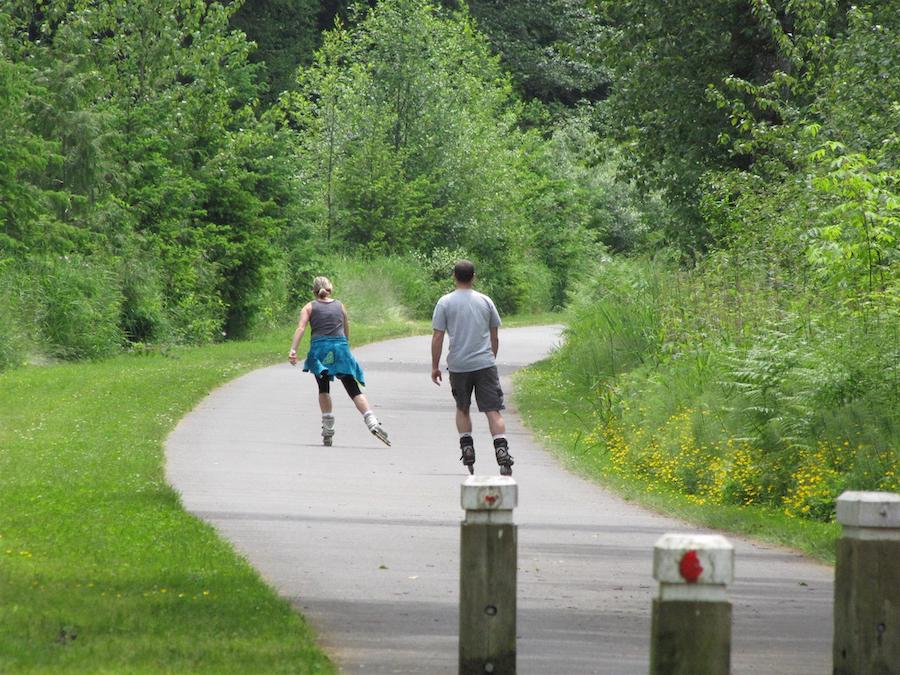
Today, Snohomish County is one of the fastest growing regions in the country, and its trail system is among residents’ favorite amenities; hundreds of thousands of people use the trail annually.
“Every few years we do different surveys,” said Sharon Swan, Snohomish County’s principal park planner. “Trails consistently rank as the No. 1 spot for what the public would like to see.”
In 2016, the county acquired the rail corridor that extends from the city of Snohomish south to King County. This next phase will connect the Centennial Trail to Woodinville—a stretch of approximately 12 to 14 miles. A spur off the trail may also potentially head west a few miles to reach the city of Everett, though Swan says planning is still underway for that project.
“A lot of our rural lands are becoming more urban and dense, so along with that, the trail has become increasingly important,” said Swan.
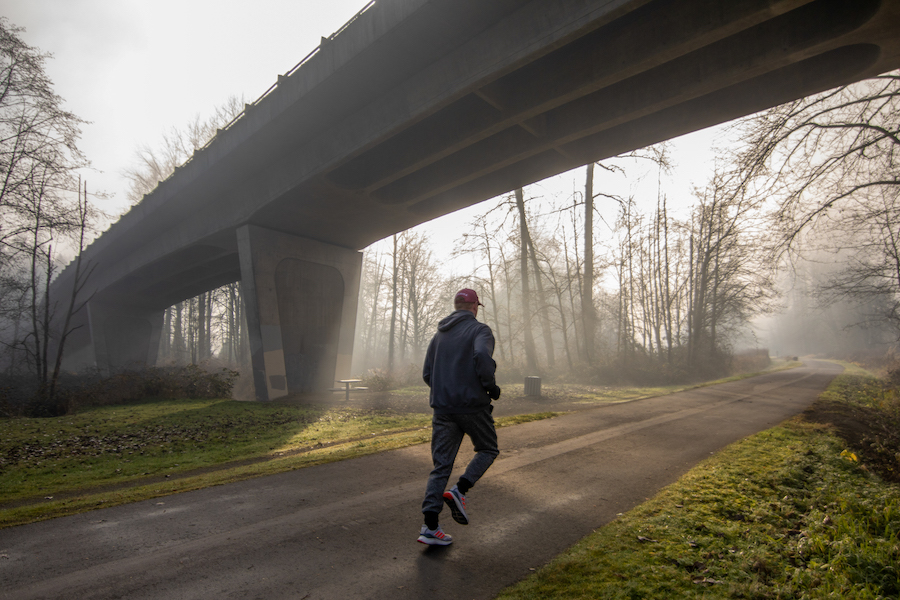
The trail plays a key part of the state’s Leafline Network, which is planned to connect communities throughout the central Puget Sound region with 900 miles of trail. So far, the network is 56% complete across King, Pierce, Snohomish and Kitsap counties.
“Our regional trails really provide that opportunity for people to connect between cities and provide alternative forms of transport in addition to the recreation value,” enthused Swan. “I’ve definitely heard from different people that have said specifically that they moved to this area because of the trail … It’s a large draw.”
Don’t Miss: Top 10 Trails in Washington State
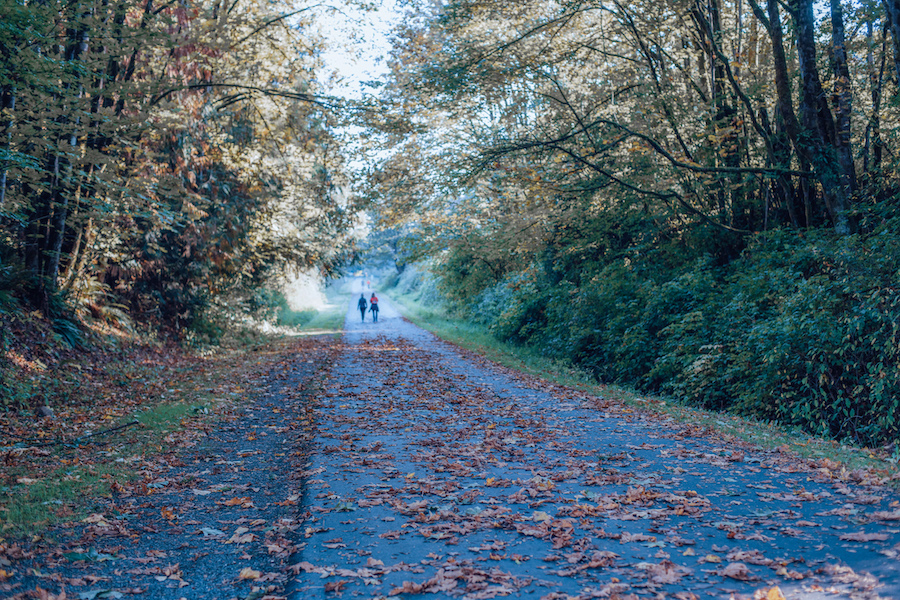
eNews
Sign up for eNews if you’d like to receive our monthly newsletter—featuring news, events, stories, useful information and updates—plus learn about special offers, ways to get involved and more! Best suited for: everyone!
Related Links
- Snohomish County Parks and Facilities
- City of Snohomish Parks and Recreation
- Trail Coalition of Snohomish County
Trail Facts
Name: Centennial Trail
Used railroad corridor: Originally owned by the Seattle, Lake Shore & Eastern Railway, the corridor was later bought by the Northern Pacific and eventually owned by the Burlington Northern Railroad.
Trail website: Snohomish County Parks and Facilities
Length: 30 miles
County: Snohomish
Start point/end point: The trail starts in Snohomish, Washington, on First Street, between Maple Avenue and Willow Avenue. It ends at the Nakashima Barn Trailhead (32325 WA 9) in Arlington.
Surface type: Asphalt
Grade: 5% or less
Uses: Walking, bicycling, inline skating, horseback riding (on a paralleling soft-surface equestrian path) and cross-country skiing; wheelchair accessible. (Note: Horse riders are prohibited in the congested areas between the Snohomish and Pilchuck trailheads, and the section between Armar Road and Bryant.)
Difficulty: Easy
Getting there: The Seattle-Tacoma International Airport (17801 International Blvd., Seattle), which sits about 40 miles from the trail’s southernmost trailhead in Snohomish, is the nearest commercial airport. Travelers can head north from the airport on I-405.
Travelers can also arrive via Amtrak at the Everett Station (3201 Smith Ave., Everett), 8 miles from the trail’s southern endpoint, or Stanwood Station (27111 Florence Way, Stanwood), 10 miles from the Bryant trailhead on the trail’s northern end.
Access and parking: The trail can be accessed at multiple parks and trailheads across the four towns that the route connects. Parking options from south to north include:
- Pilchuck Trailhead: 5801 S. Machias Road, Snohomish
- Machias Trailhead: 1624 Virginia St., Snohomish
- 20th Street Trailhead: 13205 20th St. NE, Lake Stevens
- WA 92 Trailhead: 3651 127th Ave. NE, Lake Stevens
- Rhododendron Trailhead: 10911 54th Pl. NE, Lake Stevens
- Getchell Trailhead: 8318 Westlund Road, Arlington
- Armar Road Trailhead: 15333 67th Ave. NE, Arlington
- Bryant Trailhead: WA 9 and Stanwood-Bryant Road, Bryant
- Nakashima Barn Trailhead: 32328 WA 9, Arlington
To navigate the area with an interactive GIS map, and to see more photos, user reviews and ratings, plus loads of other trip-planning information, visit TrailLink.com, RTC’s free trail-finder website.
Rentals: For bike rentals on the Centennial Trail’s north end, visit Arlington Velo Sport (401 N. Olympic Ave., Arlington; phone: 360.629.6415). On the trail’s southern end, try Bicycle Centers (707 Pine Ave., Unit B101, Snohomish; phone: 360.862.8300).

Donate
Everyone deserves access to safe ways to walk, bike, and be active outdoors.
